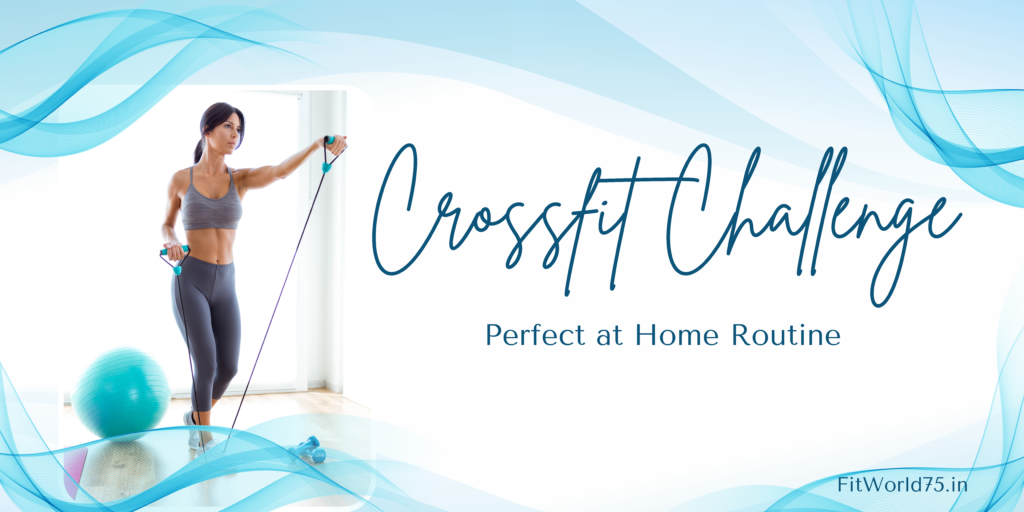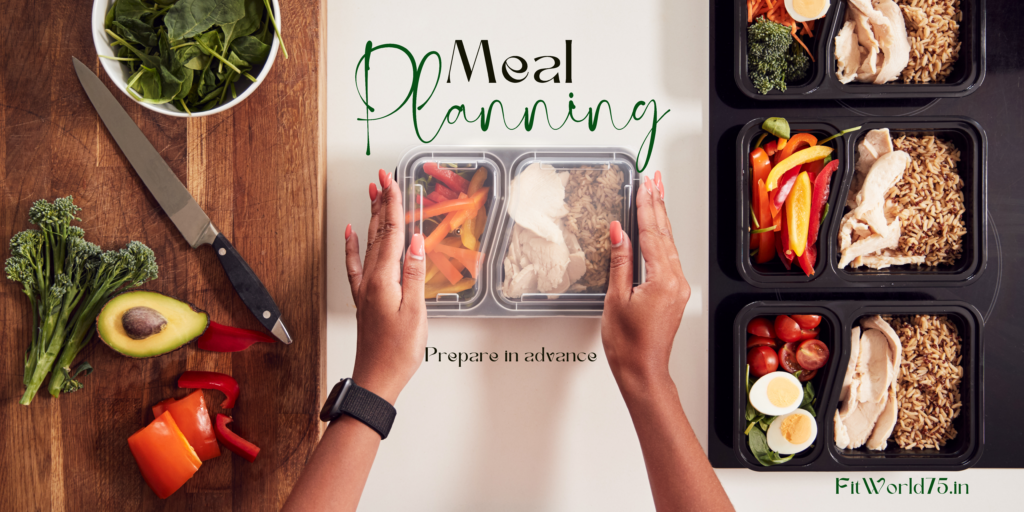Introduction
With home workouts becoming more and more popular, the fitness world has evolved in an enormous manner. Well, why not? There are many perks. The “30 day at home CrossFit challenge” is at the front of this trend. It is an amalgam of flexibility, energy, and sheer drive.
Why home workouts are the new trend
The mindset of today is a simple word: convenience. With many different obligations, the freedom of a home workout, especially a “30 day at home CrossFit challenge,” is both practical and exhilarating. No driving, no waiting for tools, and a place to work that fits each person’s preferences.
Brief overview of CrossFit and its effectiveness
CrossFit is a great example of high-intensity functional training because it blends gymnastics, aerobics, and high-intensity functional moves. How well it works? Not debatable. It burns calories, makes you stronger, and brings together people who enjoy the same things.
Table of Contents
Understanding CrossFit
What is CrossFit and its core principles?
CrossFit is a well-known exercise model that is based on various useful moves done at a high intensity. It works because of its main ideas, which are constantly changing, high energy, and beneficial movement.
The science behind high-intensity workouts
High-intensity workouts boost up the metabolism, which speeds up the burning of fat and makes muscles stronger. These intense workouts raise the heart rate, leading to an effect called “Excess Post-exercise Oxygen Consumption” (EPOC).
The Benefits of the 30 Day at home CrossFit Challenge
Flexibility and convenience: Fitting CrossFit into your routine
When your living room turns into a gym, you don’t have to worry about time. You decide your plan, which makes the “30-day at-home CrossFit challenge” adaptable and simple to fit into our hectic lives.
Saving money while getting fit: No gym fees!
Getting rid of your expensive gym agreement without sacrificing your fitness? It’s a fascinating idea. Taking the “30 day at home CrossFit challenge” is not only a good idea for your body, but also for your wallet.
Creating a personal space: Customize your workout environment
With at home tasks, a person can create a setting that fits their needs. You can choose a quiet place, music that makes you feel beneficial, or even nothing at all.
Getting Started: Preparation Tips
Creating a suitable space for 30 day at home CrossFit challenge
Set aside a place and make sure there is enough room for people to move around comfortably. Whether it’s the living room or a patio, make sure it’s clean, well-stocked, and has good air flow.
Essential equipment and affordable alternatives
There is a lot of resources at a Crossfit box, but all you need at home are jump ropes, kettlebells, and exercise bands. Choices that make sense? As weights, you may use a strong chair or water jugs to do box jumps.
Setting clear goals for the next 30 days
Decide where you want to go. Set clear goals for this CrossFit challenge, whether you want to lose weight, tone your muscles, or build your fitness.
Safety First: Preventing Injuries
Warm-ups and stretches for CrossFit enthusiasts
Carefully start to warm up. Utilise dynamic stretches like leg swings, arm rounds, and body spins. Do passive stretching exercises after your workout to help your muscles rest.
Understanding your body’s signals: When to push and when to rest
It’s hard to tell where persistence ends and overwork begins. Pay close attention to what your body has to say to you and learn its limits and warnings.
Avoiding Common Crossfit injuries
A twisted ankle or pulled muscle can make it hard to move. These risks can be eased with good form, enough rest, and power training.

Week 1: Laying the Foundation
Day-to-day breakdown of exercises
Start with squats, push-ups, and burpees, which are fundamental moves. Increase the number of reps and weights over time to make sure you get an adequate workout.
Understanding and mastering the basics
The most important part of 30 day at home CrossFit challenge are the fundamental moves. Engage yourself, work on your form, and make sure every move is done correctly.
Nutrition tips for optimal energy and recovery
Don’t waste fuel. Include proteins to help your muscles heal, complex carbs for long-lasting energy, and fats to help you feel satisfied. Stay constantly hydrated.
Week 2: Upping the Ante
Progressing from beginner to intermediate exercises
As you move into Week 2, the level of difficulty goes up. You’ll start doing harder workouts every day. Your enhanced strength and speed will be put to the test when you do tasks like kettlebell swings, box jumps, and wall balls.
It’s important to welcome these changes with excitement. The slow rise in difficulty is meant to push you to your limits without leaving you in danger.
Importance of rest days and active recovery
Rest is an important part of getting fit. During Week 2, you will also learn how crucial rest days are. You need time for your muscles to heal and get tougher. Use these days for easy things like yoga, stretching, or taking a walk at a slow pace.
Active healing helps you stay busy without overdoing it, so you don’t get tired or hurt.
Meal planning for muscle building and fat burning
As your workouts get more intense, you need to change the way you eat to focus on growing muscle and burning fat. Week 2 teaches you how to plan meals based on your fitness goals.
You might want to eat more lean meats like chicken, fish, and tofu. If you are vegan, then add more soy products, chickpeas and other high protein sources. Combine them with dense veggies and complex carbs to keep your energy up all day long.

Week 3: Challenging Your Limits
Incorporating advanced CrossFit moves
In week 3, things begin to get interesting. You’ll learn more intense CrossFit moves like deadlifts, pull-ups, and handstand push-ups. These workouts require you to have improved form, as well as more power and balance.
Don’t give up if these moves seem hard to do at first. Practise and determination will help you learn them.
Recognizing and overcoming plateaus
As you push yourself, it’s normal for your growth to stop moving forward. Even though these things can be annoying, they may additionally help you progress. Week 3 gives you ways to get past these plateaus, such as changing your workout schedule, working out more vigorously, or getting help from a professional.
Hydration and its impact on performance
The more difficult things become, the more water your body needs. Hydration is a key part of how well you do in 30 day at home CrossFit challenge. Dehydration can make you tired, give you headaches, and make you perform poorly.
In Week 3, you will learn how to stay hydrated so that you can be at your strongest during each workout. Drinks that replace electrolytes and drinking enough water will help you do this.
Week 4: Finish Strong and Plan Ahead
Last week motivation: Staying the course
Week 4 is the start of the last part of the 30 day crossfit challenge at home. At this point, it can be hard to keep going, but it’s important to keep going. Remind yourself of the goals you set out to achieve and how far you’ve come. Small benefits for your hard work can keep you going.
Assessing your progress: Celebrating small victories
Stop and think about how far you’ve come. Celebrate the little wins and changes you’ve made in the past four weeks. Keeping records or pictures of your trip can be a powerful way to keep you going.
Tips for maintaining momentum post-challenge
As the 30 day at home CrossFit challenge comes to an end, it’s important to think about the rest of your exercise path. Week 4 teaches you how to keep up the good work you’ve been doing. Whether you want to keep doing CrossFit or try something new, this week will help you learn how to set and attain long-term goals.
Nutrition and Hydration: Fuelling Your Challenge
Essential nutrients for high-intensity workouts
It is vital to eat a proper amount of macronutrients and vitamins. Important roles are played by proteins, omega-3 fatty acids, and vitamins like B12.
The role of hydration in 30 day at home CrossFit challenge performance
Water is not just important, it’s mandatory. It helps the body’s muscles work better, keeps the body cool, and restores fluids lost during the CrossFit task.
Meal prep ideas for busy athletes
Cook protein sources in large batches, make salads in jars, or make shake packs in a blender. When you plan your meals well, you get regular, healthy power.
Success Stories: Real-life Transformations
Inspiring testimonials from those who’ve done the 30-day challenge
Ivana changed her body after she had her second child. Anjum, who was a busy executive, found a break and a way to get in shape. Their stories show how good the task can be.
Before and after photos: Visual motivation
Visual cues can be very effective motivators. Seeing actual modifications can give people the motivation they need to start or stick with their “30 day at home CrossFit challenge”.
Personal tips and tricks from successful challengers
From creative ways to use resources to staying consistent, learn from those who have been in your shoes and triumphed.
Conclusion
The 30 day at home CrossFit challenge is more than just a workout plan; it’s a change in lifestyle. Whether you begin a regular CrossFit workout or explore new things to do, this isn’t the end of your trip. It just changes. Share what you’ve learned to help others and remind yourself that every drop of sweat is a step towards change.

